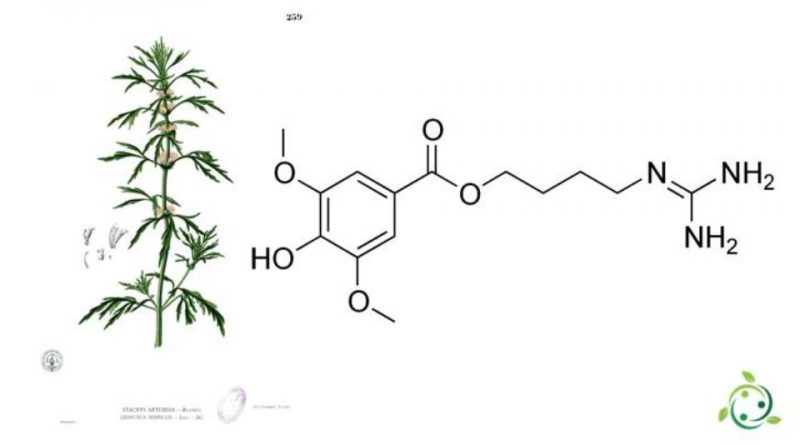Leonurine
Leonurine
Leonurine, whose term in the official IUPAC nomenclature is: 4- (Diaminomethylidenamino) butyl 4-hydroxy-3,5-dimethoxybenzoate is a mildly psychoactive alkaloid.
Leonurine has a chemical formula: C14H21N3O5 and is a naturally occurring substance in some plants of the Lamiaceae family, including: Leonotis nepetifolia (L.) R.Br., Leonurus japonicus Houtt., Leonurus cardia L., 1753, Leonurus sibiricus L. and others.
Leonurine is extracted from these plants by solubilization in water. This psychoactive substance has mildly sedative and relaxing effects.
Leonurine can also be synthesized in the laboratory. The synthesis takes place starting from eudesmic acid. The reaction with sulfuric acid produces syringic acid. Protection with ethyl chloroformate followed by reaction with thionyl chloride (SOCl2) and then tetrahydrofuran produces the 4-chloro-1-butyl ester of 4-carboethoxysyringic acid.
The chloride is then converted to an amino group via a synthesis of Gabriel with potassium phthalimide) followed by hydrazinolysis (Ing-Manske procedure). The final step is the reaction of the amine with the hemisulfate salt of S-methylisothiourea.
Warning: The information shown is not medical advice and may not be accurate. The contents are for illustrative purposes only and do not replace medical advice.

